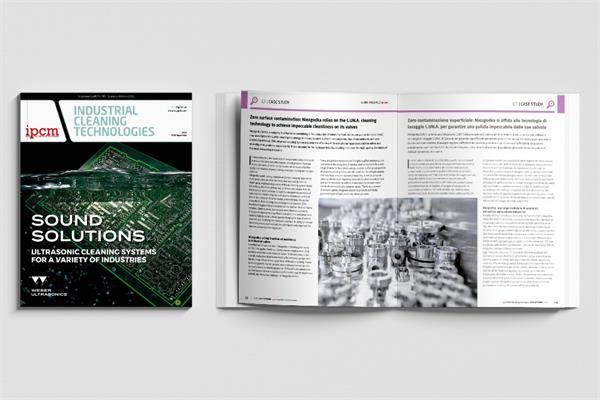
The new issue of the magazine dedicated to covering all aspects of industrial parts cleaning is available!
Bigger – stronger - more specialised. These few words summarise two key trends
in the development of European SMEs. On the one hand, the aggregation of small companies
operating in the same sector or in contiguous sectors to create organisations that have:
- greater weight on the market;
- better bargaining capacity;
- more evolved marketing structure and strategy;
- a more extensive and capillary sales network;
- more profitability and efficiency.
On the other hand, the entry into market niches through research and development, where a company can apply its
acquired skills and expertise to fill technological gaps.
These trends result from the continuous evolution and progressive internationalisation that we have been witnessing in the markets for ten years now, which have led to a substantial change in the behaviour of companies: subject to constant processes of transformation and adaptation to increasingly competitive scenarios, companies recognise that only growth, both in structural and technological terms, can guarantee survival.
This issue of the ICT Industrial Cleaning Technologies magazine offers some examples of these trends.
First, we reveal a preview of the details and objectives behind the partnership between two partially competing companies to relaunch a long-standing brand in the industrial cleaning sector: an operation that will allow them to compete at a higher market level.
In terms of innovations, we delve into the development of a technology for colouring parts after shot peening in the additive manufacturing industry: this innovation is also the result of a collaboration between two companies, each a leader in its field, which have pooled their expertise, equipment and research capabilities to create a machine that fills a technological gap in the market.
We continue with innovative applications in the medical sector, where quality requirements are increasingly stringent, and we illustrate a new approach to industrial detergency that is more sustainable, simpler and with a lower CO2 footprint thanks to highly concentrated liquid products that separate the inorganic part from the surfactant package while operating at low temperatures.
READ THE MAGAZINE!